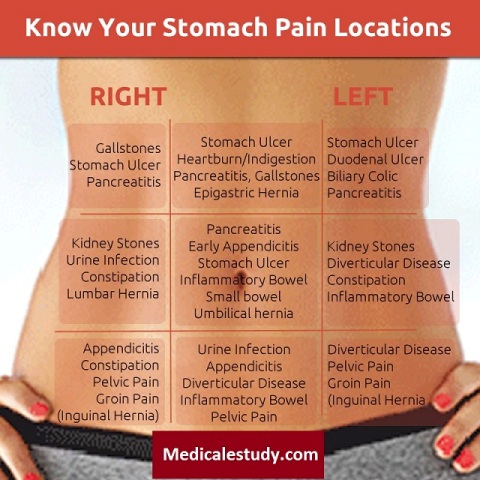
There are many different types of low abdominal pain, some of which are not serious. The cause of your pain will affect the type of treatment you need. If you are experiencing a sudden and recurring episode, you should seek medical attention. In addition to seeing a doctor, you should consider lifestyle changes and prescription drugs. In severe cases, you may need surgery. The treatment for lower abdominal ailment depends on its cause, but you should always consult a GP for an accurate diagnosis.
There are a number of different causes of abdominal pain. Some of them are vascular in nature, such as ischemic colitis, which causes a left sided cramping. Other causes of lower abdominal pain are twisted ovary, ectopic pregnancy, and groin hernias. While these aren't the most common, they are all treatable. To get the right treatment for your lower abdomen pain, you should consult your doctor and get a complete physical exam.
Depending on the cause of your lower abdominal pain, you may need to consult a doctor. For chronic or acute pain in the lower abdomen, consult your doctor or website ctrip.co.th. It is important to note that pain in the lower abdomen can be a sign of a serious problem. If you are suffering from persistent lower abdominal pain, you should seek medical help as soon as possible. This can be caused by a number of problems, including appendicitis.
As a rule, pain in the lower abdomen is associated with the digestive tract. In some cases it is associated with the abdominal wall. For others, it may be due to a vascular disease, a skin problem, or a reproductive organ problem. Whether it is a chronic or acute case, you should consult your doctor to determine the underlying cause of your lower abdominal pain. If you are suffering from chronic or acute pain in the lower abdomen, it is best to seek medical help as soon as possible.
There are two main types of lower abdominal pain: generalized and localized. Generalized abdominal pain occurs when there is a problem with an organ such as the appendix. The latter type of lower abdominal pain is not usually considered serious and can be relieved with simple treatments such as paracetamol. If your symptoms persist, you should contact your doctor. Your doctor will likely need to run diagnostic tests and some blood tests to determine the cause of your pain.
Other types of lower abdominal pain include nausea, vomiting, and stomach cramps. These symptoms can be acute or chronic and can be caused by many different conditions. Your doctor will evaluate your symptoms and prescribe treatment if necessary. The doctor will also conduct a physical examination to rule out any other medical conditions. It is important to seek medical help as soon as you begin to experience any type of lower abdominal pain. Your doctor will check your heart and lungs, as well as your digestive system.
If the pain is persistent or is accompanied by other symptoms, you should visit a doctor. In some cases, low abdominal pain is caused by an organ, but it's often not related to the organ itself. In most cases, the source of the pain is in the lower abdomen. It may also be due to an infection in the pelvic area, which is why a doctor should examine it carefully. A physician will then determine if it's a urinary tract infection or an appendicitis.
Some other causes of low abdominal pain are vascular diseases and twisted ovary. These conditions can also be caused by a groin hernia, which is a common type of tumor in the abdomen. Although some of these conditions can be treated by your primary care physician, you should go to an urgent care center if the pain is severe or is causing you considerable discomfort. There are many different types of pain and it's important to understand the different symptoms that you're experiencing.
If your pain is constant or very diffuse, it's hard to determine what's causing it. The type of pain you're experiencing will determine the severity and cause of your pain. Sometimes, it's difficult to diagnose if your pain is due to an infection or an underlying problem in the abdominal region. However, there are several symptoms that can help your doctor narrow the list of possibilities. It's important to discuss your symptoms with your doctor to make sure you don't miss a single one.